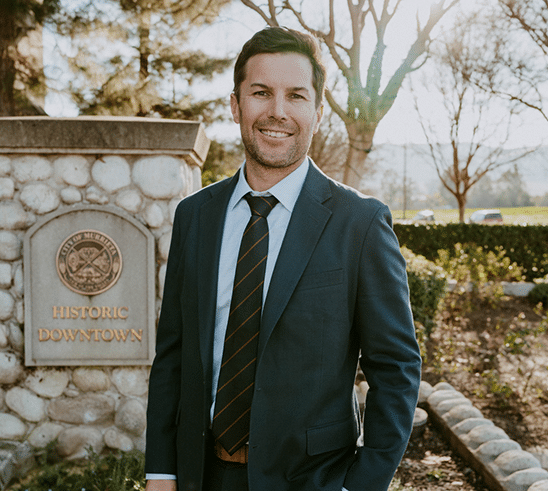In Riverside County, and the rest of the state of California, individuals who are lawfully in possession of registered firearms can find themselves in a challenging situation if their firearms are seized by law enforcement following an arrest. This scenario typically unfolds when an individual is arrested for offenses such as carrying a loaded firearm in a vehicle, in violation of Penal Code section 25850 (c)(7). Regardless of legal or lawful ownership, firearms can and are often confiscated during the arrest process.
Facing legal challenges can be overwhelming, but you don’t have to navigate them alone. At Gressley Donaldson LLP, our dedicated team of experienced attorneys is here to guide you every step of the way. Whether you’re dealing with restoring firearms rights or firearms charges, we’re committed to providing you with the legal representation you deserve. Don’t wait—contact us today and take the first step towards protecting your rights and your future.
In California, the regulatory framework guiding the seizure and subsequent return of firearms is based on a couple of interplaying statutes as well as landmark judicial decisions that outline the rights of firearm owners and the responsibilities of law enforcement. The precedent set by the case of Espinosa v. Superior Court (1975) sets much of the precedent in this matter. Espinosa v. Superior Court explicitly affirms the right of individuals to reclaim firearms that were lawfully possessed at the time of their arrest, provided they are later cleared of the charges against them. This case shows that the disruption of lawful possession by an arrest should not lead to permanent deprivation if the basis for the arrest proves unfounded.
This ruling is supported by additional legal provisions that enforce the return of seized property under specific circumstances. For example, California Penal Code sections 1536 and 1540 regulate the process by which seized property is to be handled and returned. Section 1536 stipulates that property seized during an arrest must be held by law enforcement as evidence during the pendency of the case, whereas Section 1540 requires a court order to retain the property if no charges are filed, or if the seized items are no longer needed as evidence.
Moreover, the principle established by Espinosa is further reinforced by other decisions that stress the importance of respecting property rights and the legal standards required for confiscation and retention of personal property by the state. This legal framework ensures a balance between the needs of law enforcement to manage potentially dangerous situations and the rights of individuals to their property, particularly when their legal proceedings conclude in exoneration.
When an individual is arrested for carrying a loaded firearm in a vehicle, law enforcement officers are mandated to seize the firearm as part of the evidence collection process. This action is standard procedure, intended to secure any potentially dangerous items and to preserve evidence pertinent to the alleged crime. In Riverside County, as in other jurisdictions, the immediate consequence of such an arrest is the removal of the firearm from the individual’s possession, which is then held by the law enforcement agency involved.
Once the legal proceedings commence, the outcome of these proceedings significantly affects the return of the seized firearms. If the individual is acquitted or the charges are dismissed, they can initiate the process to have their firearms returned. This process involves several critical steps:
- Filing a Motion: The first step is for the individual or their legal representative to file a non-statutory motion for the return of property in the court where the case was adjudicated. This motion requests a judicial order directing law enforcement to return the seized items.
- Court Order: If the court is satisfied that the individual’s possession of the firearms was lawful and that they are entitled to have them returned, it will issue an order to the relevant law enforcement agency.
- Completing CFARS Application: The individual must then complete a Law Enforcement Gun Release (LEGR) application through the California Firearms Application Reporting System (CFARS). The CFARS platform is an online system established by the California Department of Justice (DOJ) to streamline the application process for various firearms-related legal actions, including the return of seized firearms.
The California Firearms Application Reporting System (CFARS) plays a role in the process. To initiate the return, the individual must create an account on CFARS and submit various applications. The applications includes a detailed background check, ensuring that the individual still qualifies to legally possess firearms under California law.
The background check is a crucial part of the process. It is designed to ensure that the individual has not developed any legal disqualifications from possessing firearms since their initial registration. This check includes scrutiny of criminal records, restraining orders, and other factors that could influence an individual’s legal capability to possess firearms. Upon passing the background check, the individual is notified and can proceed to reclaim their firearms.
After completing all procedural requirements and obtaining clearance from the background check, the individual can contact the law enforcement agency holding their firearms to arrange retrieval. This step typically involves presenting the court order and proof of the successful CFARS application, along with any identification documents required by the agency.
For residents of Riverside County, understanding this process is essential as their is a lot of complexities associated with the seizure and subsequent return of legally owned firearms. Gressley & Donaldson can provide representation or consultation to help guide you through this intricate process. Ensuring that rights are protected and legal standards are met. Reach out if you have questions.

